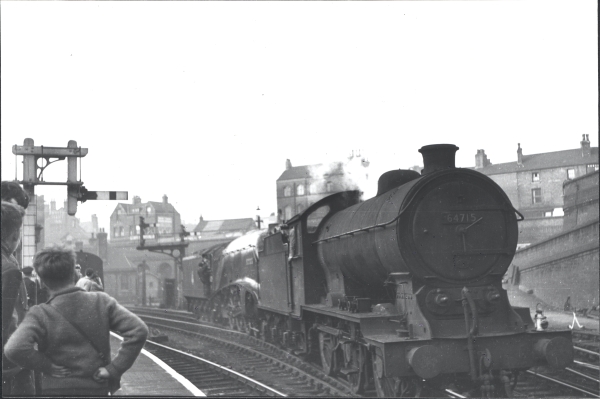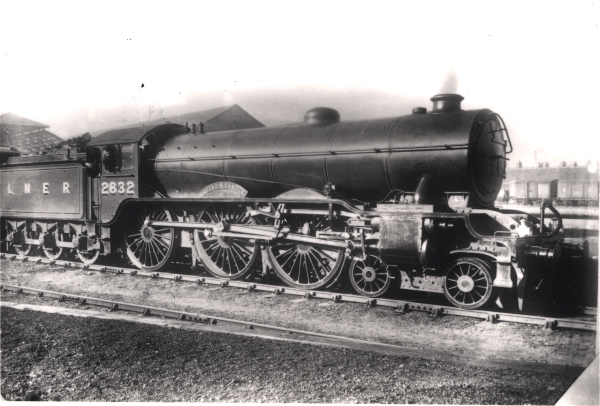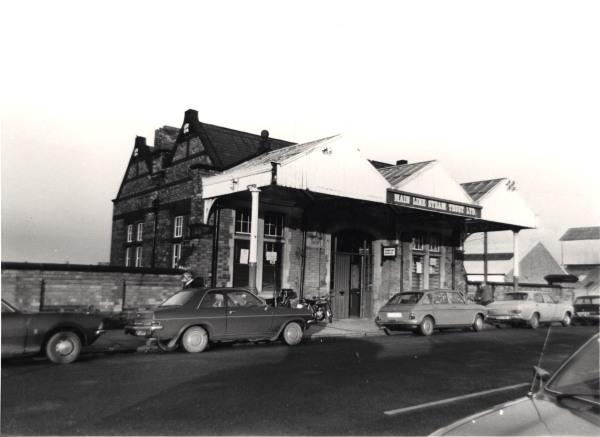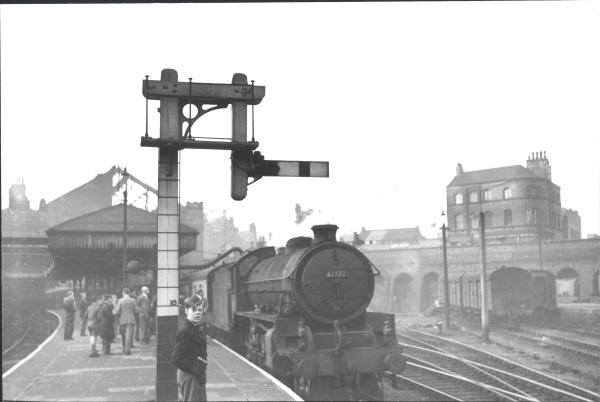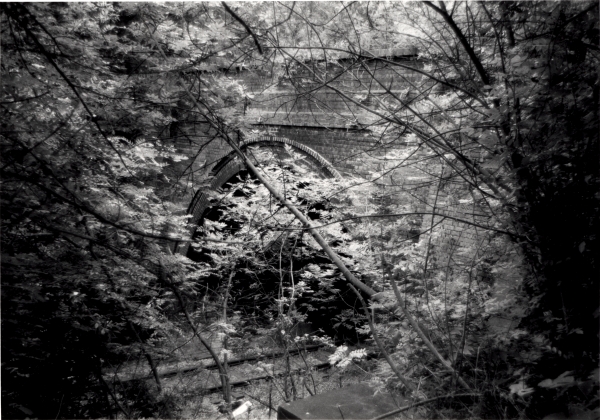Being in my 80th year my memories go back to the early 30's when my father's job brought him to Loughborough. I've always been interested in railway history, and am still a practising railway modeller. We moved to Loughborough in 1933. The GCR was one of six pre- 1923 companies which merged to form the London and North Eastern Railway (LNER). Every Easter, my mother took me by train to visit her relatives in the Hull area, where three uncles and a cousin, who was much older than me, all worked for the LNER. The route was via Nottingham Victoria to Sheffield Victoria where we changed trains for Hull Paragon. A second change took us to Beverley where we actually stayed at the home of one of the said relatives.
24th April 1957, A4 4-6-2, No. 60029, WOODCOCK, failed to complete its run and had to be removed from the train at Nottingham Victoria. Here we can see the stricken locomotive being shunted out of the way by the station pilot - Gresley designed J39 0-6-0, No. 64715. See Details
Motive power on the GC to Sheffield was usually a B17 'Footballer' 4-6-0 in 1930s LNER apple green livery hauling a train of varnished teak bodied coaches. Onwards to Hull from Sheffield, the usual loco was a D49 'Hunt' 4-4-0. Around 1938 or 9, V2 2-6-2s began to appear on GC expresses, for us as far as Sheffield.
Photographed at the LNER station at Belgrave Road, Leicester, this is the 4-6-0 main line locomotive BELVOIR CASTLE, an early example of the B17 Class engines designed by Sir Nigel Gresley which were built between 1929-1937. See Details
It must have been summer 1939 when we were standing on the platform at Loughborough Central. The noise of an approaching train heading south was heard. The noise became louder and louder and it was clear the train was an express not scheduled to stop at Loughborough. Finally it roared through the station at great speed heading towards Leicester. The locomotive was an early Gresley Pacific 4-6-2, Class A1 in those days with the original 180 lbs. p.s.i.(per square inch?) boiler, a loco type not normally seen on the GC.
Photographed from the Great Central Road girder bridge in December 1977, this is the entrance to Loughborough Central Station. See Details
Later, I found out the GC section of the LNER was starting to receive a few A1 Pacifics displaced from the East Coast Main Line by newly built A4s and V2s. My father used to say if he had to travel to either Leicester or Nottingham, he preferred the GC Line to the Midland. The trains were faster!
On 24th April 1957, Ian Allen Publishing ran a 'Trains Illustrated' special from Paddington to Doncaster, returning over the London Extension to Marylebone. The locomotive shown at Nottingham Victoria Station is a Thompson B1 class 4-6-0 - 61272. See Details
In the late '30s, one of the fastest trains on the LNER was the newspaper train from Marylebone to Sheffield which passed Loughborough in the small hours of the morning. The Central station was situated at the bottom of a dip between Quorn and Barnstone Tunnel to the north. The 'Newspaper' was reputed to be travelling at 90mph through the station - according to schoolboy gossip.
A view through the trees towards the north portal of Barnstone Tunnel, a comparatively short structure situated south of East Leake that brought the London Extension under Rempstone Road, Loughborough. See Details
Another memory concerns my earliest loco spotting activities. A favourite place to do this was at an occupation crossing adjacent to the Midland Line a hundred yards or so South of Loughborough Midland Station. This spot also had a good view of the GC Line on its embankment where it crossed the Midland Line. On a sunny Saturday afternoon I would arrive on my bike, armed with notebook, a pencil and a bottle of Tizer. It was possible to enjoy the sight and sound of as many as thirty different LNER, GCR, LMS and Midland locomotive classes I a single afternoon. Just imagine it. V2s, B17s, D11 (GC 'Directors'), K3s, J39s above and ' Jubilees', 'Compounds,' 'Black Fives', Beyer Garratts below.
Happy Days.
J A Evans 2nd March 2004
Undoubtedly the most famous products that Beyer Peacock turned out were the Garratt type articulated locomotives. These machines were very popular in Africa and the Far East, although there were a few built for service here in Britain. See Details



